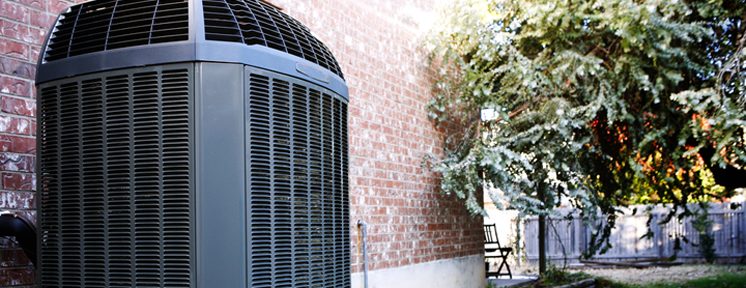
Reference: DOE NOPR
Efficiency standards for HVAC equipment are nothing new to contractors, but on January 1, 2015 a new residential efficiency standard went into effect. It is very different from those previously created, and it affects all contractors in new ways. It is important to be aware of your responsibilities as required by the rules.
As of January 1, 2015, minimum efficiency of central split air conditioning systems will change to 14 SEER in the Southeast and remain 13 SEER in the North. They must also be 14 SEER and have 12.2 SEER for systems smaller than 45KBtu/Hr, and 11.7 sEER for systems larger than 45KBtu/Hr in the Southwest.
This regionalism in standards created a unique problem for enforcing these regulations. In the past, enforcement was always by manufacturing date. With these updates, that’s no longer possible. The 13 SEER ACs are still legal in the north, meaning they still need to be manufactured for that region. Thus, the burden of enforcing the regulation shifts to installation. This shift to the industry has created new complications and challenges for everyone in the distribution channel.
DOE established a Working Group consisting of various members from industry stakeholders, in efforts to negotiate an enforcement mechanism. The group met several times in the fall of 2014 and made a recommendation to DOE. DOE issued a Notice of Proposed Rulemaking (NOPR) in November 2015, adopting most of the recommendations laid out by the Working Group. In this article, we will discuss aspects of NOPR that are most pertinent to contractors.
Record-Keeping Requirements
Contractors will be required to keep records for 48 months after the date of installation; distributors retail records for 54 months after the date of sale; and, manufacturers retain records for 60 months after the date of sale.
Ref: CAC Enforcement NOPR – section F
Manufacturer Responsibilities
Beginning 30 days after the final rule, a manufacturer must retain:
- For split-system central air conditioner condensing units: the model number; serial number; date of manufacture; date of sale; and party to whom the unit was sold, including the person’s name, full address and phone number
- For split-system central air conditioner indoor coils or air handlers (not including uncased coils sold as replacement parts): the model number; date of manufacture; date of sale; and party to whom the unit was sold, including the person’s name, full address and phone number
- For single-package central air conditioners: the model number; serial number; date of manufacture; date of sale; and party to whom the unit was sold, including the person’s name, full address and phone number
Distributor Responsibilities
Beginning July 1, 2016, a distributor must retain:
- For split-system central air conditioner condensing units: the manufacturer; model number; serial number; date the unit was purchased from the manufacturer; party from whom the unit was purchased, including person’s name, full address, and phone number; the date the unit was sold to a dealer or contractor; the party to whom the unit was sold, including person’s name, full address, and phone number; and, if delivered to the purchaser, the delivery address
- For single-package central air conditioners: the manufacturer; model number; serial number; the date the unit was purchased from the manufacturer; the party from whom the unit was purchased, including the person’s name, full address, and phone number; the date the unit was sold to a dealer or contractor; the party to whom the unit was sold, including the person’s name, full address, and phone number; and, if delivered to the purchaser, the delivery address
Contractor Responsibilities
For all installations in the South and Southwest, beginning 30 days after issuance of a final rule in this rulemaking, contractors must retain:
- For split-system central air conditioner condensing units: the manufacturer name; model number; serial number; location of installation, including the street address, city, state, and zip code; the installation date; and the party from whom the unit was purchased, including the person’s name, full address and phone number
- For split-system central air conditioner indoor coils or air handlers, not including uncased coils sold as replacement parts: the manufacturer name; model number; location of installation, including street address, city, state, and zip code; date of installation; and the party from whom the unit was purchased, including the person’s name, full address and phone number
- For single-package central air conditioners: the manufacturer name; model number; serial number; location of installation, including street address, city, state, and zip code; date of installation; and party from whom the unit was purchased, including the person’s name, full address and phone number
Public Awareness
Ref: CAC Enforcement NOPR – section C
The DOE provides great information on enforcement of regional standards:
The DOE has also setup an email and phone number for public input:
- EnergyEfficiencyEnforcement@hq.doe.gov
- 202-287-6997
Labeling
Ref: CAC Enforcement NOPR – section I
The Working Group also recommended (and manufacturers agreed) to add a label to the central air conditioner condensing unit which indicates where the unit can legally be installed. For units that do not meet the EER standards applicable to the Southwest region, the label would state, “Install Prohibited in Southwest.” For units that cannot be sold in the Southeast or Southwest because their SEER value is below the minimum required in those regions, the label would state, “Install Prohibited in Southwest and Southeast”.
Manufacturer Liability
Manufacturers may be fined up to $200 (per unit) in violation for knowingly selling a product to a distributor, contractor, or dealer with knowledge that the entity routinely violates any regional standard applicable to the product.
Summary Table
Central Air Conditional Regional Enforcement Summary Table
Ref: CAC Enforcement NOPR – section L

In Summary
Enforcing regional standards is complicated so it is important that contractors should familiarize themselves with the enforcement rules. There is some work being done to change the enforcement from installation date to manufacturing date and we hope to see this change when the next residential standard change occurs in 2023.

